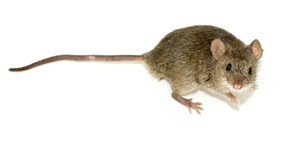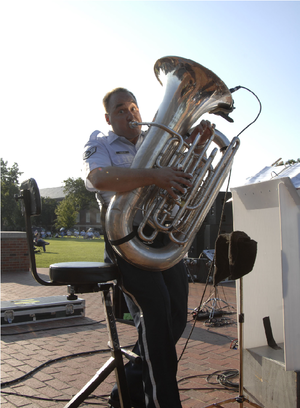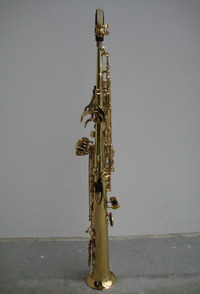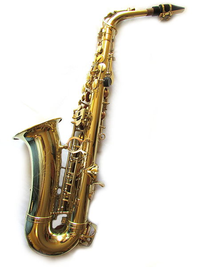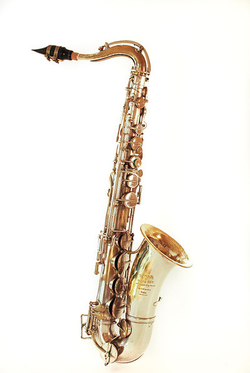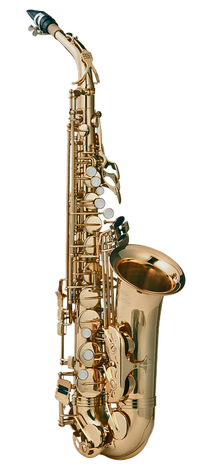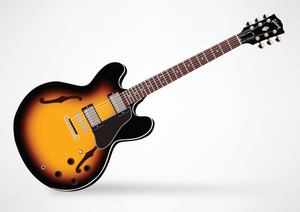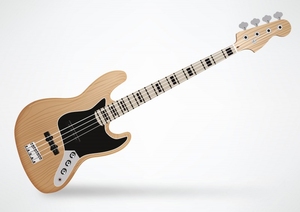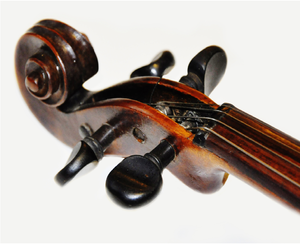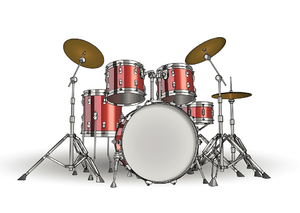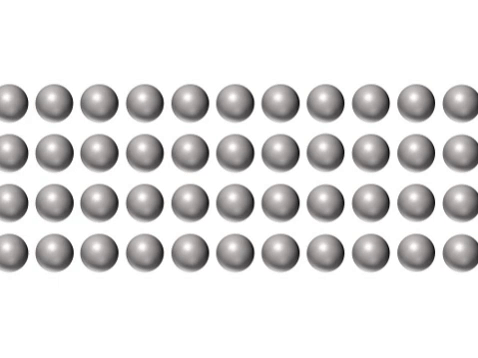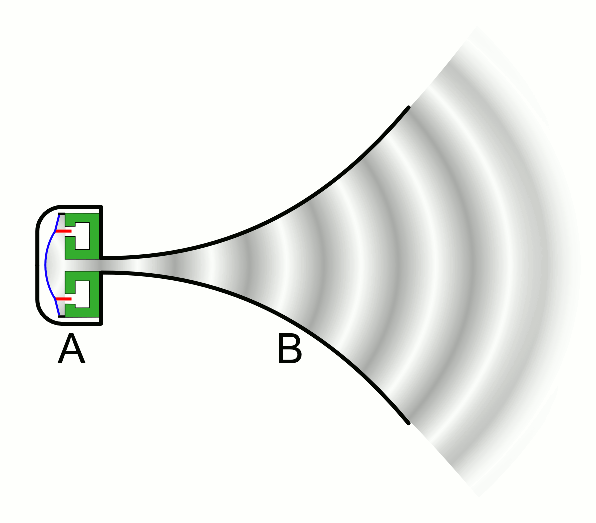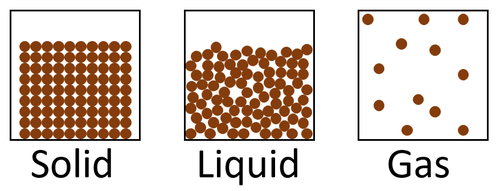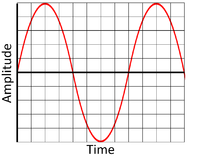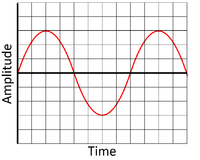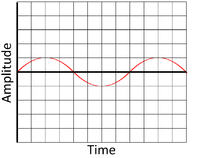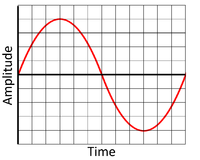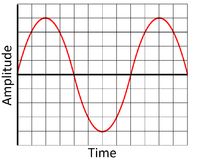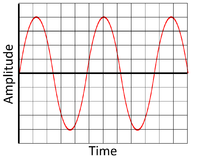Difference between revisions of "Sound"
(→About Sound) |
(→Key Stage 3) |
||
| Line 98: | Line 98: | ||
==Key Stage 3== | ==Key Stage 3== | ||
===Meaning=== | ===Meaning=== | ||
| − | [[Sound]] is a | + | [[Sound]] is a [[wave]] of compression that can pass through a [[material]]. |
===About Sound=== | ===About Sound=== | ||
| − | : [[Sound]] [[wave | + | : [[Sound]] is a [[Longitudinal Wave|longitudinal wave]]. |
: [[Sound]] is transmitted by [[particle]]s colliding with one another. | : [[Sound]] is transmitted by [[particle]]s colliding with one another. | ||
| − | + | : The [[speed]] of [[sound]] through [[air]] is 340[[m/s]]. | |
| − | |||
| − | : The [[speed]] of [[sound]] through [[air]] is 340[[m/s]] | ||
{| class="wikitable" | {| class="wikitable" | ||
|- | |- | ||
| Line 121: | Line 119: | ||
| style="height:20px; width:200px; text-align:center;" |This animation shows a [[speaker]] creating a sound by making a [[wave]] of compression (dark grey) that passes through the [[air]]. | | style="height:20px; width:200px; text-align:center;" |This animation shows a [[speaker]] creating a sound by making a [[wave]] of compression (dark grey) that passes through the [[air]]. | ||
|} | |} | ||
| + | |||
| + | ===Medium=== | ||
| + | : [[Sound]] [[wave]]s can pass through [[solid]]s, [[liquid]]s and [[gas]]es but [[sound]] cannot pass through a [[vacuum]]. | ||
| + | : [[Sound]] travels fastest through a [[solid]] because the [[particle]]s are already touching so they have little distance to travel to pass on the [[vibration]]. | ||
| + | : [[Sound]] travels the slowest through a [[gas]] because the [[particle]]s in a [[gas]] are spread far apart so they take some time before they [[collide]] with the next [[particle]] to pass on the [[vibration]]. | ||
| + | {| class="wikitable" | ||
| + | |- | ||
| + | |[[File:ParticleModelSolidLiquidGas.png|center|500px]] | ||
| + | |- | ||
| + | | style="height:20px; width:200px; text-align:center;" |A [[diagram]] showing the '''particle model''' for [[solid]]s, [[liquid]]s and [[gas]]es. | ||
| + | |} | ||
| + | : The [[speed]] of [[sound]] through [[air]] is 340[[m/s]]. | ||
===Sound Volume=== | ===Sound Volume=== | ||
Revision as of 15:48, 20 October 2018
Contents
Key Stage 1
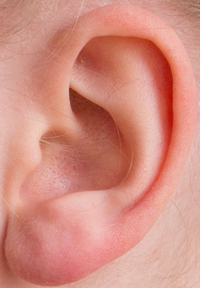
We hear sound with our ears.
Meaning
Sound is something that we hear with our ears.
About Sound
- A sound can be loud or quiet.
- A sound can be low or high pitched.
Examples
| The sound of a mouse's squeak is very 'high pitched'. | A tuba makes a deep or 'low pitched' sound. |
| Shouting, screaming and yelling are all loud sounds. | Whispering is a very quiet sound. |
Key Stage 2
Meaning
Sound is a vibration that passes through the air to our ears.
About Sound
- Sounds are caused by materials vibrating.
- Sound has to travel through a medium. If there is no medium, sound cannot get form one place to another.
- Sound travels through the air because it makes the air vibrate. If there were no air sound could not travel to our ears.
- Sounds can be high or low pitched.
- Sounds can be loud or quiet.
Pitch
Size
| A small 'soprano' saxophone makes a high pitched sound. | An 'alto' saxophone makes the second highest pitch. | A tenor saxophone makes the second lowest pitch. | A large 'bass' saxophone makes a low pitched sound. |
Thickness of Strings
| A regular guitar has thin strings and can make high pitched sounds. | A 'bass' guitar has thick strings and makes low pitched sounds. |
Length of Strings
| The shorter strings on a harp make a higher pitched sound. |
Tightness of Strings
| The pegs on the end of a stringed instrument can make the strings tighter or looser. |
Volume
| When you hit a drum hard, it makes a louder sound because the vibration is bigger. | When you pluck a guitar string harder, it makes a louder sound because the vibration is bigger. | Blow harder down a tube it makes a louder sound because the vibration is bigger. |
Key Stage 3
Meaning
Sound is a wave of compression that can pass through a material.
About Sound
- Sound is a longitudinal wave.
- Sound is transmitted by particles colliding with one another.
- The speed of sound through air is 340m/s.
| This is animation shows how sound travels along a material by particles colliding with one another. |
| Sound Waves |
| This animation shows a speaker creating a sound by making a wave of compression (dark grey) that passes through the air. |
Medium
- Sound waves can pass through solids, liquids and gases but sound cannot pass through a vacuum.
- Sound travels fastest through a solid because the particles are already touching so they have little distance to travel to pass on the vibration.
- Sound travels the slowest through a gas because the particles in a gas are spread far apart so they take some time before they collide with the next particle to pass on the vibration.
| A diagram showing the particle model for solids, liquids and gases. |
Sound Volume
- The volume of a sound is how loud or quiet it is.
- Volume is determined by the amplitude of the wave (how much the wave vibrates).
| This is a high amplitude wave showing a sound with a high volume, so it is loud. | This is a low amplitude wave showing a sound with a low volume so it is quiet. |
Pitch
- A sound can be a high pitch or low pitch.
- Pitch is determined by the frequency of the wave (how quickly the wave vibrates).
| This is a low frequency wave showing a sound with a low pitch, so it is a deep sound. | This is a high frequency wave showing a sound with a high pitch. |
